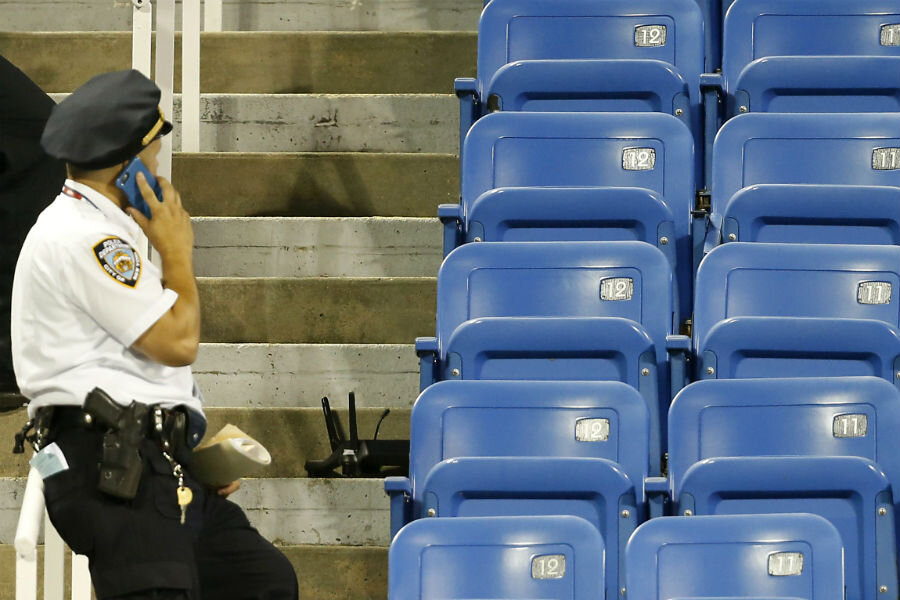Drone crashes at US Open. Where is Washington on regulation?
Loading...
As Italy’s Flavia Pennetta played a second-round match against Romania’s Monica Niculescu at the US Open tennis tournament in New York on Thursday night, she said she heard a buzzing overhead but wasn’t sure what it was.
Her first thought, she told ESPN, was that it might be a bomb. “A little bit scary, I have to say,” said Pennetta.
Soon, they all found out what it was. A device far less dangerous but increasingly invasive in modern-day society: the drone. The small black vehicle had crashed into the stands of Louis Armstrong Stadium, fortunately landing in an empty section without hurting anyone.
Authorities managed to locate the operator at a marina shortly after the incident, and arrested him the next morning for operating the drone outside of its designated area.
Police say Daniel Verley, a teacher in New York City, is also facing charges of reckless endangerment.
Thursday’s drone scare is a reminder of another high-profile public aerial incident this year, when a small quadcopter crashed onto the grounds of the White House and raised alerts about a potential security vulnerability, The Christian Science Monitor previously reported.
It also brings renewed emphasis to the need for drone regulation, which varies based on devices' applications, sizes, and weights.
Recreational drones do not need any kind of license, according to the National Law Review. But the Federal Aviation Administration has limited how high they can fly, and established no-fly zones near people or airports.
While the drone industry is big and getting bigger, with analysts anticipating its business to surge to $8.4 billion by 2019 and nearly ten times that by 2025, legislation is comparatively limited and slow.
Just this week, the FAA named two officials to oversee the interests of private sector drones, to “allow the existing UAS (Unmanned Aircraft Systems) office to concentrate on rulemaking,” reports Reuters.
Officials have been under intense pressure, as twenty groups ranging across various industries lobbied the federal government in the second financial quarter about drone regulation, “up from nine mentions in the previous year,” according to CNBC.
Currently, the agency has only issued temporary permits for commercial drones, and is taking suggestions from the public on regulations proposed in February. One rule, for example, would limit the private use of certain drones to only be allowed in the daytime. The FAA would also require vehicles to be kept within the operator's line of sight.
The FAA is working to finalize its rules on commercial drones, which should be ready within a year, reports Reuters.
Deputy Administrator Michael Whitaker has told Congress the projected start date is June 17, 2016.






